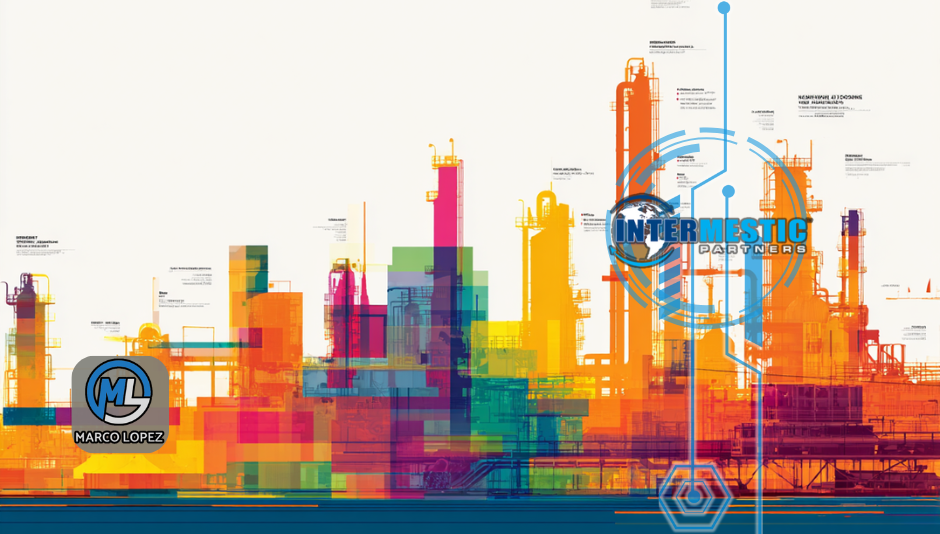Rebuilding North America’s Industrial Edge: Trade, Trust, and Technology in the Manufacturing Triangle
- Marco Lopez

- Jun 27
- 3 min read

Introduction: Why North America’s Manufacturing Triangle Still Matters
The industrial strength of North America rests on an enduring alliance: the manufacturing triangle linking the United States, Mexico, and Canada. This trilateral engine has powered jobs, innovation, and competitiveness for decades.
Today, as global markets shift and supply chains strain, the triangle's revival depends on three core drivers: trade, trust, and technology. These pillars not only stabilize domestic industries—they help define the region’s global influence.
Historical Context: From Agrarian Roots to Advanced Industry
Until the mid-20th century, North America's economic foundations were primarily agrarian. But the postwar era ushered in industrial expansion, cross-border trade agreements, and international investment.
Still, recent years have exposed cracks in the foundation:
Trade tensions and tariffs
Breakdowns in cross-border trust
Lagging adoption of advanced technologies
To rebuild, the region must realign around what originally made it strong.
Trade: The Engine of Growth
Free and fair trade has fueled the region's economic rise. But it remains vulnerable to political volatility.
According to Investopedia, trade directly drives:
Job creation
Industrial growth
Innovation and economic resilience
However, during the Trump administration, abrupt shifts in policy—like tariff wars with China and Canada—sent shockwaves across the triangle. The path forward must be built on long-term certainty and open market commitments.
Trust: The Invisible Infrastructure
Trust is the foundation that makes manufacturing networks function—between suppliers, governments, and consumers.
Harvard Business Review notes that in today's digital age, trust must be earned through:
Transparency
Consistency
Long-term alignment
In North America, this means better cross-border coordination, local supplier integration, and shared responsibility for environmental and labor standards. Companies like Toyota (Georgetown, KY) and Intel (Rio Rancho, NM) show how trust leads to resilience and quality.
Technology: The Future Is Automated and Intelligent
The rise of Industry 4.0—with smart machines, AI, and real-time analytics—is reshaping what’s possible.
GE’s Brilliant Factory in Ontario exemplifies this transformation, using:
Predictive maintenance
Digital twins
Data-driven process optimization
North America must lead—not lag—in advanced manufacturing adoption. Integrating technology at every level is key to productivity, quality, and sustainability.
The Case for Rebuilding the Triangle
With over 12 million U.S. manufacturing jobs and more than 1.5 million in Canada, the sector remains vital.
The solution is a three-pronged strategy:
Trade – Commit to stable, modern trade frameworks that promote open markets and regional resilience.
Trust – Deepen cross-border relationships that go beyond contracts to include values and accountability.
Technology – Invest in automation, AI, and digital infrastructure to drive global competitiveness.
Conclusion: A Triangle Worth Strengthening
Rebuilding North America’s manufacturing strength is not just about economics. It’s about national resilience, middle-class jobs, and regional stability.
To compete globally, we must first collaborate regionally. That means Canada, Mexico, and the U.S. must work together—leveraging trade, building trust, and embracing technology.
At Intermestic Partners, I’ve spent years helping companies and governments do just that. From developing secure cross-border infrastructure to advancing nearshoring strategies and trade facilitation, our mission is to unlock the full potential of North American cooperation.
As founder of Intermestic Partners, I’ve seen firsthand how strategic collaboration—rooted in trust and guided by innovation—can deliver real results. Whether it’s building industrial corridors, advocating for smart border policy, or strengthening supply chain integration, we’re not just imagining the future of North American manufacturing—we’re building it.
The future of manufacturing starts here. Let’s make sure it stays in North America, and that it works for everyone.
.png)




Comments